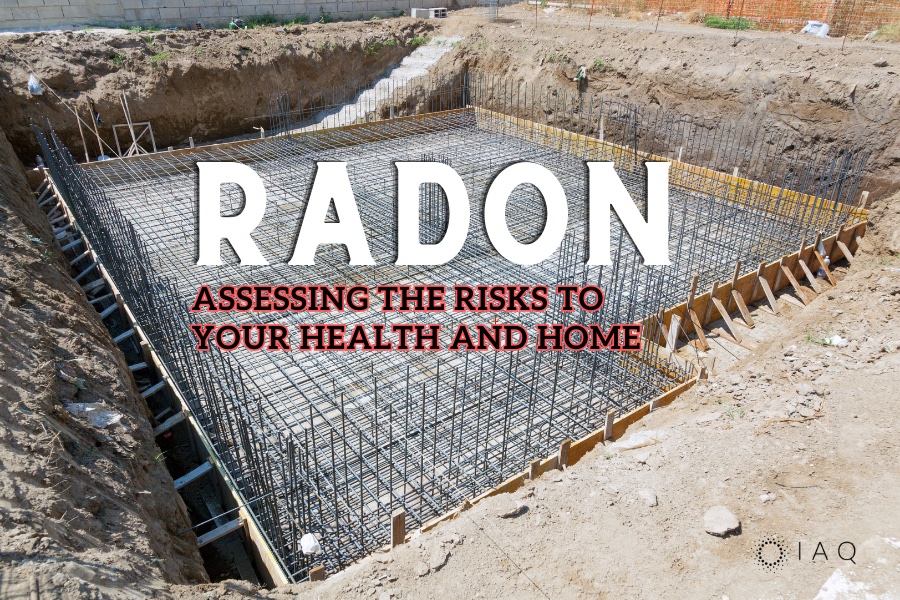
The dangers of radon have been known for decades, with a link to cancer being firmly established as far back as the 1950s. But just how much of a risk radon presents to human health remains a complex subject, as levels of this naturally occurring gas fluctuate over time.
In this article, we will demystify the subject of how radon affects indoor air quality, answer some of the most frequently asked questions, and help determine whether you should be worried about radon in your home.
What is Radon and How Can You Protect Yourself?
Radon is a naturally occurring radioactive gas that is found in the ground. It can seep into homes and other buildings through cracks in the foundation or walls. Radon is the second leading cause of lung cancer after smoking.
How Dangerous Is Radon?
Radon is a radioactive gas that can cause lung cancer. The risk of developing lung cancer from radon exposure increases with the amount of radon in the air. The EPA (Environmental Protection Agency) estimates that radon is responsible for about 21,000 lung cancer deaths each year in the United States.
How Do I Test for Radon?
There are several ways to test for radon. You can purchase a radon test kit from a hardware store or online. You can also hire a professional to test your home for radon. The EPA recommends that you test your home for radon if you live in an area where radon is a problem. You can find out if your area is a problem area by visiting the EPA’s website.
How Do I Reduce Radon Levels in My Home?
There are several ways to reduce radon levels in your home. You can seal cracks in your foundation or walls, install a radon mitigation system, or ventilate your home. The EPA recommends that you take steps to reduce radon levels in your home if your radon levels are above 4 picocuries per liter (pCi/L).
What Are the Symptoms of Radon Poisoning?
There are no immediate symptoms of radon poisoning. However, long-term exposure to radon can increase your risk of developing lung cancer.
How Can I Protect Myself from Radon?
The best way to protect yourself from radon is to test your home for radon and reduce the levels if they are high. You can also reduce your risk of developing lung cancer by not smoking and getting regular lung cancer screenings.
What is the Safe Level of Radon?
The EPA recommends that radon levels in homes be below 4 picocuries per liter (pCi/L). If your radon levels are higher than 4 pCi/L, you should take steps to reduce them.
Where Can I Find More Information About Radon?
The EPA has a website with more information about radon. You can also contact your state radon office for more information.
How Does Radon Affect Your Indoor Air Quality (IAQ)?
Radon is a colorless, odorless gas that can seep into your home through cracks in the foundation or walls. It can also be released from building materials, such as granite and concrete. Radon can build up in your home and cause health problems, including lung cancer.
How Can You Protect Your Indoor Air from Radon?
There are a few things you can do to protect your indoor air from radon:
- Test your home for radon. You can purchase a radon test kit from a hardware store or online. An indoor air quality monitor can provide continuous monitoring of pollutants including radon, which may fluctuate over time.
- Take simple steps to mitigate radon levels. If your radon levels are high, take steps to reduce them. You can seal cracks in your foundation or walls, install a radon mitigation system, or ventilate your home.
- Watch your lung health. Not smoking is the best way to protect your health from radon.
- Learn more about radon and how to protect your health. Visit the EPA’s website or contact your state radon office.
- Contact a radon expert. If you are concerned about radon levels in your home, you can contact a radon mitigation company for help.
What Are Some Key Facts and Stats About Radon?
- Radon is the second leading cause of lung cancer after smoking.
- The EPA estimates that radon is responsible for about 21,000 lung cancer deaths each year in the United States.
- Radon levels can vary widely from home to home.
- The EPA recommends that radon levels in homes be below 4 picocuries per liter (pCi/L).
- There are several ways to test for radon.
- There are several ways to reduce radon levels in your home.
- Not smoking is the best way to protect your health from radon.
See Also:
- How to Detect Mold in the Air
- What Are VOCs and How to Get Rid of Them
- How to Check for Carbon Monoxide in Your Home







